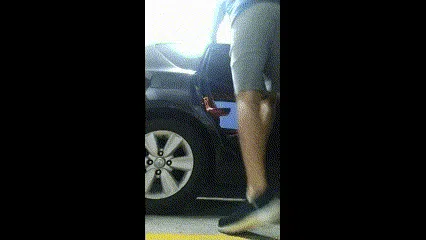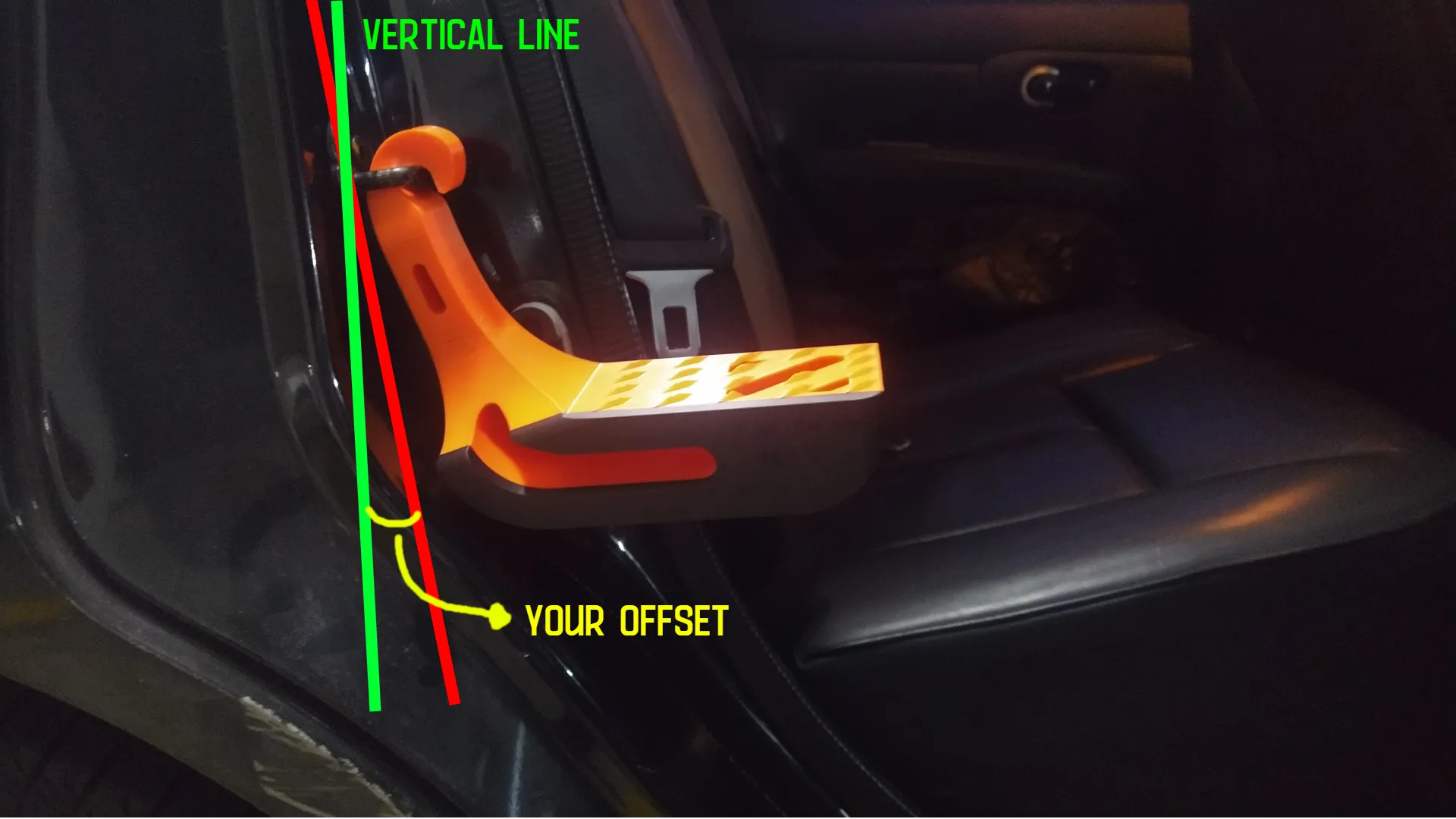Easy door striker step!
Easy door striker step!
Print Profile(4)




Description
⚠️⚠️WARNING!!⚠️⚠️
→ Please follow the print instructions to ensure a safe print!!! I designed this with much care and safety in mind, but I'm not responsible for any damage, material or physical, IF YOU'RE SLICING IT YOURSELF PLEASE FOLLOW THE GUIDELINES
This model was inspired by the commercially available “Moki” door step
It wasn't the first 3D printed one to be made, as it is seen in the great "Kevin Levy" model
(https://www.printables.com/model/467740-foothold-for-car-door-latch)
However, I wanted to make something more robust, with many considerations in mind:
- It should be safe to use, handling as much as weight as possible
- It should have curved edges as to not scratch your car
- Save as much weight as possible ( hard for a plastic part )
- It should be suitable for many car door shapes (more details bellow to know WHICH ONE TO PRINT?)
With this in mind, I designed 5 different versions. Here I'm testing the 105 degree one ( offset 15 )

(sorry for the gif's quality)
This was printed really weak to better test the part's perfomance and safety. It was printed with Bambu Lab's PLA Tough (now discontinued) with only 15 walls and 0 infill (but do not recommend it)! I don't weigh much (around 60Kg/132lbs) but the part was able to sustain me really well even after forcing it downwards.
Now, WHICH ONE TO PRINT?
First, If you're slicing this yourself, I recommend:
→AT LEAST 45 walls (fully solid) for generic PLA
→21 walls, 15 top layers and 15 bottom, as well as 25% cubic infill for “ABS-Like” PLA's / PLA + / PLA tough or PETG (considering good print profiles and layer adhesion)
ALSO, make sure you have a really good first layer, as this is a big print. If you wanna be safe, thoroughly wash your build plate with warm water and detergent/soap, don't forget to scrub the surface
STEP 1
First, you'll have to do a sanity check to see if the hook will fit before printing the whole thing! Door strikers seem to be standard but I would check first if it fits. Here are the dimensions of the striker I used as a reference:

If any measurements are smaller or vastly different the hook will most likely NOT fit. If you're not sure of the dimensions, PRINT “Clearence test” model FIRST, if you're slicing it yourself, feel free to slice using 2 walls and minimum infill on the test as this is only to test if the hook will fit. I'm from Brazil and standards here may differ so if you find it not to fit your car please leave me a message with your striker's dimensions and I will happily add a new model.
STEP 2
Here at 2 different models from the total 5 to pick to illustrate the difference.

The different offset angles represent the angle at which your car's striker are at, you can easily measure this with your phone's compass app or any digital level app, or of course the good n' ol' eyeballing! This doen'st need to be 100% accurate, it is only to ensure the step is as horizontal as possible when placed on your car.

Then, pick the one with an offset equal to that of the one you've measured (again, this doesn't have to be 100% accurate ).
DISCLAIMER!
Unfornunately, I wasn't able to fit the 110 angle ( offset = 20 ) on the A1 Mini, however all the other models were made to barely fit! Hence no print profile for the 110 version for the mini, however, it can be slightly cut to fit.
TECHNICAL DETAILS
It is hard still to optimize the plastic used once every filament has different characteristics. The simulation below used ABS plastic with only 20MPa yield strength ( really really weak! ). To put it into perspective, Bambu Lab's PLA Basic can handle 75% MORE then this. With an ultimate tensile strengh of around 35MPa (as stated on their website). Although not an apples to apples comparison, PLA's yield strength tends to be also bigger then 20MPa

After analyzing real data from the great videos from CNC Kitchen, I determined 20MPa as an unrealistic yet conservative baseline for comparison, this way I could design the part to be as safe as possible.
Keeping in mind most PLA's have an ultimate tensile strengh above 25MPa, it is considered safe to print this part even with a weak PLA, AS LONG AS IT IS COMPLETELY SOLID

Here, with a 120Kg/260lbs load simulation, the parts with a stress greater then or equal to 20 MPa are small and present on the surface of the part. The majority of the door step has a high safety coefficient even when considered with 20MPa MAX.

This results are confimed by the small tests done with a significantly weaker part with appox. 70% of the mass of the fully solid part ( when considering PLA )
Keep in mind the actual deformation will vary and is not accurately represented by the simulation once ABS's young's modulus is different of PLA's
Comment & Rating (22)












